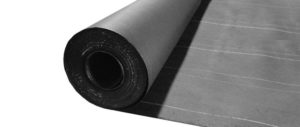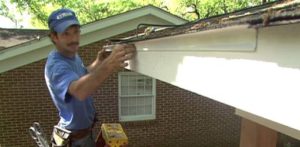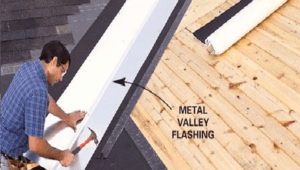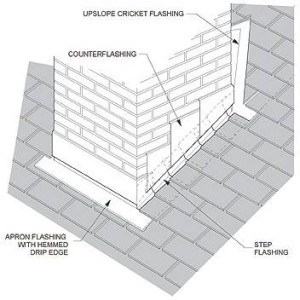Roofing Components Systems and How They All Work Together
The components and parts that make up your roofing system and how they work together. Have you ever wondered how roofing component systems such as, decking, tar paper, pipe jacks, valley flashing, chimney and sidewall flashing all work together? As we receive phone calls from homeowners considering replacing their roofs, we often hear the question, “will your roofing company replace everything or just the shingles?”
So, I decided to answer this question here at Texas Home Exteriors in this post to help homeowners better understand roofing components are and how they all work together to keep homes dry on the inside with what we call, best roofing practices. So with that said, here we go with some informative information!
Roof Decking

Roof Decking (Plywood or OSB) Being Installed on a Houston TX Home
To start off with, your roofing system needs some type of a surface to install all the components installed onto allowing them to work together. The roof decking or roof deck is a pitched surface built from either plywood or OSB sheathing allowing the roofing system to work as a flat but pitched surface.
This decking is mounted on top of roof rafters most often constructed of a 2″x6″ wood material frame that holds and supports the roof decking. The roof decking is often built from 4’X8′ sheets of plywood or OSB sheathing on homes across the country.
An upgrade to standard decking would be a product such as a Techshield radiant barrier. One side of this product is aluminum which deflects the radiant heat, thus keeping it from entering your roof attic space. Using this product will result in lower heat gain in the summer, reducing utility bills.
There is a big drawback to installing the Techshield radiant barrier, be aware that the aluminum barrier can interfere with cell phone signals which could affect reception in the home. I have personally experienced this noticing a weakened signal and have heard of others having no signal at all.
Roofing Felt and Tar Paper

felt tar paper roll installed before under roofing shingles
As your roof decking is being installed, it is vulnerable to the elements such as moisture and rain because the product is wood-based. Prolonged exposure to these elements will cause rotting of this decking so it is important to apply Roofing Felt and Tar Paper, this is the barrier most often installed. This layer provides a waterproof layer of protection for the wood decking during installation and continues to offer protection of the roof from the possibility of ingress of moisture .
The felt and tar paper also serves as an additional layer of protection in the case of a roof shingle blow-off during a storm. This tar paper is available in both #15 and in #30 pound options. The #30 lb product is most commonly used in steeper roof applications.
Drip Edge

Roofing crew installing drip edge
Drip edge is a galvanized metal or aluminum product that is available in galvanized or may be painted to match your home’s existing fascia boards.
Drip edge acts as an edge flashing which is installed around the perimeter of a home usually following the facia board. When the roofing shingle is installed, it will either be mounted flush with this drip edge or extended about 3/4″ of an inch beyond it.
Drip Edge comes in many styles such as, L, D-L, sizes and colors depending on application of the new roof installation. The most common drip edge used is 1.5″x1.5″ or 2″x2″ “L” style. This is the one most commonly used on Houston Texas homes.
Roofing Valley Flashing

Crew Installing Roofing Valley Flashing is where two pitched roof angles come together and meet up with each other. The water is collected together at this junction called a valley. and or underlayment is needed to be installed underneath this roofing shingle area to be collected and guided down the roof slope.
Roofing Valley Flashing is installed in the case when two pitched roof angles come together and meet up with one another. This is important as water collects at these junctions, called valleys. Roofing valley flashing and/or underlayment needs to be installed underneath this roofing shingle area.
To collect any passing water under the shingles and guide it down the roof slope to keep it from pooling. This will stop water from penetrating the roof decking possibly leading to rot and/or entering into the home’s interior.
There are a variety of methods of installation of valley flashing, one method is called open valley and closed valley each having definite differences on how they look. The open valley flashing has a passage space in the middle where the roofing shingles do not touch allowing for drainage and exposing the valley flashing underneath.
With the closed valley flashing optio, the roofing shingles overlap one another covering the valley flashing underneath. This method is by far the most common in the Houston Texas metro area.
Pipe or Plumbing Jacks

New pipe led jack installed on roof
Pipe Jacks which may also be called “plumbing vents” are a pipe that protrudes out of the rooftop for ventilation of septic systems and/or to allow venting (air intake) while flushing the toilet.
Pipe jacks can also serve as location to insert a snake if one were ever needed to clear out clogged drains or pipes. It is recommended that Roofing pipe/vent jacks be replaced every time a new roofing system is installed to prevent water from leaking into your Texas home.
Pipe Jacks come in plastic and lead materials. We prefer the lead jacks because they will never rot or deteriorate and they are not susceptible to becoming brittle like plastic will. As you can see in the photo, the new pipe jacks blend in better with the roof if they are painted to match your new roofing shingle color. This offers a nice finishing touch with better blending.
Chimney Flashing

chimney flashing diagram
When replacing your roof, consider installing new chimney flashing if applicable, it should be checked to see it is in need of replacement. Most often this is replaced during a roof replacement if the home has either a brick or chimney wrapped with siding.
The flashing is made from galvanized metal or aluminum. Additionally, some chimneys have a roof cricket behind them to divert water away. This is a great idea and will prevent access water from building up behind any chimney and leaking into the home.
Sidewall Flashing
Sidewall flashing is a metal strip that is used when any roof pitch or slope meets a sidewall of any given home. This flashing will divert the water away, keeping it from getting into your home by channeling it away from the sidewall and off from the roof surface area without letting the water get under the roofing shingles.
Sidewall flashing replacement is often overlooked as it can be difficult to remove and replace because it is installed under and behind the siding. The Kick-out Flashing is located at the end of this sidewall flashing and diverts the water away preventing it from going behind the siding and entering the home.
Ventilation Solar

Innovative Solar Power Vents Fans
The roofing shingles lay on the sloped decking that creates a space we commonly call an attic. Day and night this space will have trapped air inside which can often get hot and damp especially if there is a lack of air circulation and ventilation.
If this is a concern, we recommend considering having roof solar power vents installed to help with circulation, ventilation and to help remove accumulated dampness and moisture. This roofing component has become more popular in the last several years.
With one solar powered roof vent installed, the fan will run for free as it uses the sun’s natural energy to run. This is a green approach to keeping your attic cooler during our hot and humid 6-8 months of summer that we seem to experience here in southeast Texas. This is recommended for every homeowner that would like to conserve energy.
This is also becoming a notable trend not only throughout the country but worldwide. This trend is most likely to continue.
Ventilation Ridge Vents

Ridge Vent Flow Hot Air Out The Top Fresh Air Drawn In From The Soffit Vents
This is by far the most popular method of ventilation method in the state of Texas and many others here in the US. A Ridge Vent is located at the top of the roof, (ridge) and will be at the highest point where the hot air is gathering.
A 1′ slot on either side of the peak is cut for the hot air to escape. This creates a natural draft (suction) and pulls increas are from the soffit vents. No moving parts are ever involved in the roofing component.
Conclusion
As you can see, there are several components that make up a complete roofing system. Each component plays a specific role in waterproofing your home to help keep the home and the contents inside the home high and dry. When properly installed, decking, tar paper, pipe jacks, valley flashing, chimney and sidewall flashing roofing component systems work together to ensure that your Houston Texas home is watertight, providing protection that will last for years to come.
Please feel free to post any questions, thoughts or suggestions in the comments below and thank you for visiting our website blog!



We wanna thank you for creating this cool website and keep up the great job! Love your roofing blogs!!
Gary,
We are glad that you have liked it!! Greg
Having read this I thought it was very informative. I appreciate you taking the time and effort to put this information together about the different roofing systems and how they work together. I often find myself spending way too much time both
reading and commenting. But so what, it was still worthwhile! Thanks again Texas home exterior!
Davida,
You are most welcome. Glad that you found our Roofing Components Systems most informative and helpful. Greg form Texas Home Exteriors.
Why doesn’t any of your ads are your website say you don’t do double wides I have a regular roof and can put siding like any other and have a 24×24 shop was interested in converting to a apt and why didn’t your rep. Know this.after 4 times talking to him I finally get that excuse.I’ve even got two rooms and a huge walk-in closest added on its 2600sq ft.he finally tells me insurance want allow it.but the other roofing company doesn’t have a problem. When I told him he tells me I’m closer to Dallas why don’t I look there if that’s how yaw feel why advertise in East tx
Kevin,
Thank you for making me aware of this. We will be sure to make some changes. Other roofing companies have different requirements and parameters. For instance, we do not work on 3 story homes due to lability and mobiles due to movement issues. We have a new rep and he should have made you of this from the start. Please accept my apologies.. Greg
It is interesting how each roofing component works together. I like the way that you have made them flow together in your webpage here. Great post! Gregg
Gregg,
Thanks for your response to our blog post here at Texas Home Exteriors! Hey, I like your name! Greg (ending in one G)
Hello, how’s it going? Just shared this post with a colleague of mine, this is great info.
Gregg Thanks, This is great information about roofing.
David,
Thanks for your input on our roofing components systems blog post.
Greg